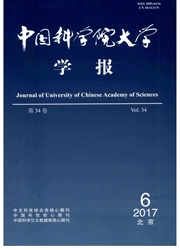

 中文摘要:
中文摘要:
细胞信号转导网络的结构复杂,规模庞大,建立的数学模型维数高,变量多,具有高度非线性.在复杂系统分析设计中,模型简化始终是主要的研究问题之一.本文提出一种基于混合推理方法的模型简化策略,利用代谢控制分析、敏感性分析、主元分析和通量分析相结合,降低系统模型维数,减少生化反应个数,筒化系统结构.以NF-κB信号转导网络作为研究对象,原模型由24个常微分方程和64个参数组成,简化模型则包括17个常微分方程,1个代数方程和52个参数.仿真结果表明,简化模型能够准确地预测系统的动态特性,为模型分析和参数辨识提供方便,验证了模型简化策略的有效性.
 英文摘要:
英文摘要:
The mathematical model of cell signal transduction networks is highly nonlinear and complex, which involves a large number of variables and kinetics parameter. How to effectively develop the reduced-order model is a major problem for analyzing complex systems. In this work, a model reduction strategy via hybrid inference method is proposed for complex signal transduction networks. This approach synthesizes metabolic control analysis, sensitivity analysis, principal component analysis, and flux analysis to reduce the dimensions of the model and to decrease the number of the biological reactions. Using NF-κB signaling pathway as an example, the detailed model consists of 24 ordinary differential equations and 64 parameters. According to the model reduction strategy, the reduced-order model is composed of 17 ordinary differential equations, one algebraic equation, and 52 parameters. The simulation results demonstrate that the reduced-order model quantitatively predicts the dynamic characteristics of the system output, which are much the same as that of the detailed model. Therefore, the model reduction strategy provides guidance for the analysis and design of complex cell networks. It is more effective and more straightforward to estimate the unknown parameters by means of the reduced-order model.
 同期刊论文项目
同期刊论文项目
 同项目期刊论文
同项目期刊论文
 Maximin and Bayesian robust experimental design for measurement set selection in modelling Biochemic
Maximin and Bayesian robust experimental design for measurement set selection in modelling Biochemic A systematic approach in analyzing sustained oscillations in an NF-kB signal transduction pathway Sy
A systematic approach in analyzing sustained oscillations in an NF-kB signal transduction pathway Sy Determine minimum state number to be measured of a class of signaling pathway for parameter estimati
Determine minimum state number to be measured of a class of signaling pathway for parameter estimati 期刊信息
期刊信息
